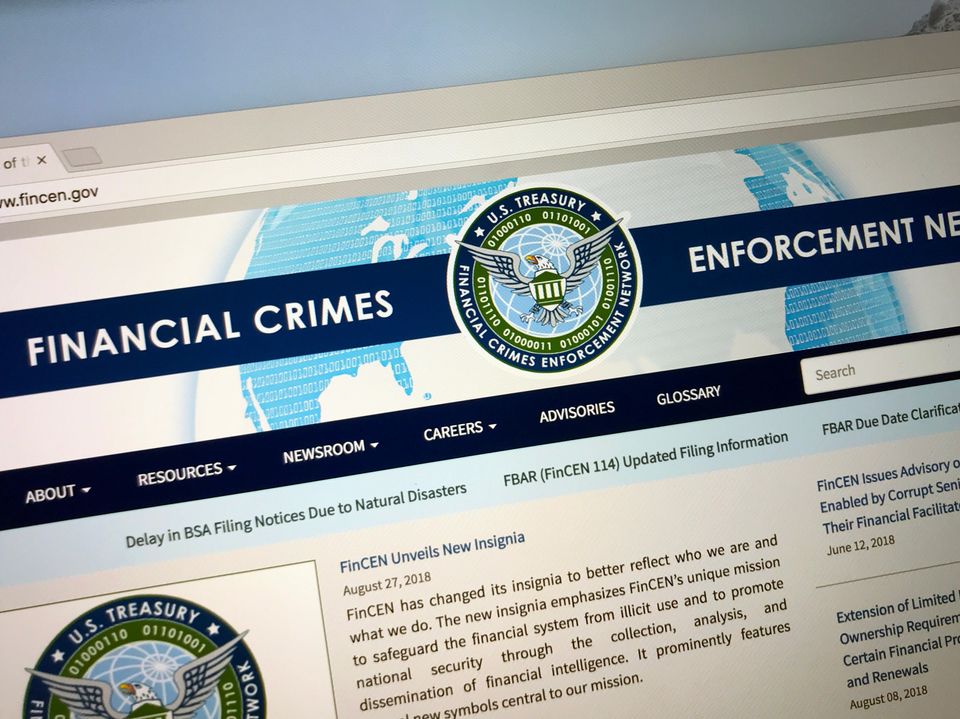If I asked you to pull out your wallet right now and show me all of its contents, would I find a debit card issued by a neobank like Varo? Maybe there's a company-issued Ramp card with your name next to it as well.
Perhaps the company that issued you that Ramp card provides critical financial infrastructure, such as mortgage servicing or simplified online payments. Before you head to work (or log in) every morning, I bet you check in on your Acorns investments, and then remember you need to load up your kid's Step account with some lunch money. The common thread between all of these companies? They all trace the viability of their business models (if not their very existence) to the Durbin Amendment.
In this post, we'll take a quick look at the Durbin Amendment and how its passage helped spur a massive fintech market, one projected to grow to 699.5 billion by 2030.
The Before
To fully understand Durbin, we must revisit the regulatory landscape of the time. The world was reeling from the 2008 financial crisis and the Great Recession. In the U.S. there were strong sentiments for financial regulatory reform. Ultimately, this resulted in the passing of The Dodd-Frank Wall Street Reform and Consumer Protection Act (Dodd-Frank) the most 'sweeping overhaul of the United States financial regulatory system' - heavyweight legislation focused on improving financial stability and consumer protection. Senator Richard Durbin (IL) proposed a last-minute addition to Dodd-Frank, a provision focused on establishing an official limit on debit card interchange fees paid by merchants to banks for processing payments. Durbin argued that by regulating this interchange, merchants would pay less on debit card charges which, in turn, would protect them from the pricing practices of large institutions some deemed to be unfair. Durbin also suggested that cost savings would be passed on to consumers, thereby providing greater protections to individual purchasers.
Enterprising Banks, Thirsty Talent, New Distribution, and Forgotten Segments
The real essence of Durbin comes from the fact that it only regulates financial institutions with greater than $10 billion in assets, thus many smaller banks and credit unions are exempt. For larger financial institutions regulated by Durbin, profitable revenue streams from debit card interchange dried up overnight. Big banks refocused their efforts on servicing more-profitable, higher net-worth clients and shifted their product lines to match (credit cards, mortgages). Customers - particularly those who relied heavily on debit as their primary payment method - were left out in the cold since they were no longer the focus area of bigger banks' revamped business models.
For exempt banks, it was a new day. Still able to derive significant profits from pre-Durbin interchange rates meant they could continue to offer debit-heavy products and now had new segments of consumers to onboard. However, challenges for these smaller banks remained. How would they attract these new users? If they were able to do so, how could they quickly onboard them, and build new products (and the underlying infrastructure to support these new products) to support the increased demand? Despite having new competitive advantages over bigger Durbin-regulated banks, smaller financial institutions still relied on much of the same legacy technologies of their larger counterparts.
As Durbin-exempt banks sought to answer these questions, two other significant waves swept into the industry - just at the right time. The first was talent. The regulatory-heavy climate contributed to an exodus of many talented professionals from traditional banks and securities firms. Many of them possessed deep expertise in financial products and were actively searching for ways to utilize that knowledge. Additionally, the early 2010s saw the enhancement of many foundational technologies such as mobile phones and mobile apps, as well as the proliferation of social media platforms. In concert, these technological advancements would create new distribution channels to reach an unparalleled amount of new customers.
As Dodd-Frank brought greater scrutiny to the financial ecosystem, even the most crafty, entrepreneurial professionals found it hard to launch the new products they envisioned. The roadblock? A banking license. Obtaining a banking license is incredibly difficult and prohibitively expensive. The answer would come in the form of something Durbin-exempt banks knew quite well - extending banking charters. Smaller banks realized that by extending their banking charter to these entrepreneurs in a partnership, they could gain several new depository accounts (and assets) while also outsourcing the building of new products to teams 1) better-versed in modern technologies and 2) singularly focused 3) capable of launching targeted products faster. In addition to revenue from these partnerships, banks would also benefit by gaining telemetry into these new technologies allowing them to, over time, increase their own in-house technical capabilities. Durbin-exempt banks saw these fintech partnerships as a way to better service their existing customers while preparing their own infrastructure for attracting newer customers in the future. It is through these partnerships that the modern fintech industry was born.
The After
Looking back after a decade-plus of Durbin there are some clearly identifiable phases. Early on, industry pioneers such as the neobank Chime helped to prove the classic FBO-account model, where funds deposited by Chime users are held in a global For Benefit Of account housed at Chime's partner (or sponsor) bank. As the technical partner and relationship holder with its users, Chime is responsible for managing the ledger and delineating which funds belong to which users. Similarly, online payments pioneer Stripe partners with an acquiring bank like Wells Fargo to process payments.
As Durbin-exempt banks deepened their relationships with their fintech partners, the desire to acquire new customers spurred investment and interest in the space. Fintechs started to pop up everywhere offering a spectrum of consumer products such as banking & saving, credit & lending, trading & wealth planning, insurance, real estate, peer-to-peer payments, and much more. Newer technologies like Crypto and Web3 also shook up the industry, inviting a whole new subset of users, partnerships, and complexities to manage. Savvy entrepreneurs realized that businesses had unmet needs in the traditional banking ecosystem, and partnered with Durbin-exempt banks to build products focused on a B2B audience. Companies like Brex, BlueVine, Carta, and Mercury sprouted up to meet these needs.
Even with the partnership of a sponsor bank, teams realized that friction remained in getting new financial products to market. Many players set out to build products specifically aimed at alleviating these points of friction, giving rise to modern fintech infrastructure verticals. Plaid (data aggregation and normalization) and DriveWealth (brokerage) are two teams that have identified industry-specific pain points and built infrastructure to service other financial institutions. Other companies have taken friction-fixing to extremes by building API-driven platforms that plug directly into a partner bank's underlying rails, abstracting away the need for fintechs to navigate older banking infrastructure. Such BAAS platforms (Banking-as-a-service) allow fintech teams (and non-fintech companies hoping to launch a financial product) to quickly spin-up products by building in familiar frameworks. Similarly, companies like Highnote, Gailleo, and Marqueta exist to meet businesses' card-issuing needs.
Not everyone has been so quick to join the Durbin train. Regulatory efforts to reframe Durbin so that all banks are regulated on debit card interchange (or that all banks are exempt) have been introduced - often by Durbin-regulated banks or their lobbies - in hopes of regaining leverage. Most commonly, Durbin-regulated banks have fought back by creating large-scale initiatives aimed at driving innovation across the organization, poaching veteran tech talent, or simply acquiring established fintech companies.
While these regulatory efforts have seen minimal success to date, the threat of new legislation and its untended impacts continues to generate discussion and analysis.
The 'Durbin' Treatment for Credit Cards?
In July of 2022, Senator Dick Durbin (and Roger Marshall (R-KS)) introduced the Credit Card Competition Act (Durbin-II) aimed at increasing competition in the credit card market by mandating that all credit cards be enabled with at least two unaffiliated networks to process transactions. As industry giants Visa and Mastercard process about 83% of general-purpose credit cards in the U.S., the legislation intends to provide smaller businesses with greater bargaining power to negotiate merchant processing fees. Although the bill has yet to advance, many are bracing for unintended outcomes that can potentially shake up one of the credit card industry's most popular draw-ins - rewards points. Similar to the effect of capping debit card interchange had in Durbin-I, mandating a second unaffiliated network will likely drive down the price transaction fees the card networks can pass on to merchants, and in turn the profitability that comes from a credit card swipe. It is these same transaction fees that card networks (and co-branded sponsor companies) rely upon to power point-based rewards/loyalty programs for consumers. While it's far from settled, one potential outcome of this new legislation could be less lavish rewards programs, as the economics behind it all may no longer be as sensible.
A Lasting Legacy - Stronger infrastructure for consumers and businesses
While staunch debate continues as to whether Durbin should be expanded or curtailed, the legislation's impact in establishing niche verticals and allowing specialized teams to solve problems with better quality products has been well-established. Before Durbin, consumer banking & saving, credit & lending, trading & wealth planning, insurance, and real estate were all financial industries defined by outdated technology and minimal innovation. One could argue that the most significant advancements made possible by Durbin have been in the fintech infrastructure arena. Every day, companies are founded with the mission of mastering single functions previously left to the do-all-banks saddled with bureaucracy and lacking specialization. This is our story at Footprint - we've set out to do just this in the identity, fraud, and risk space. We've assembled a world-class team to rethink old philosophies and bring trust and transparency back to the internet using leading modern technologies and standards.





